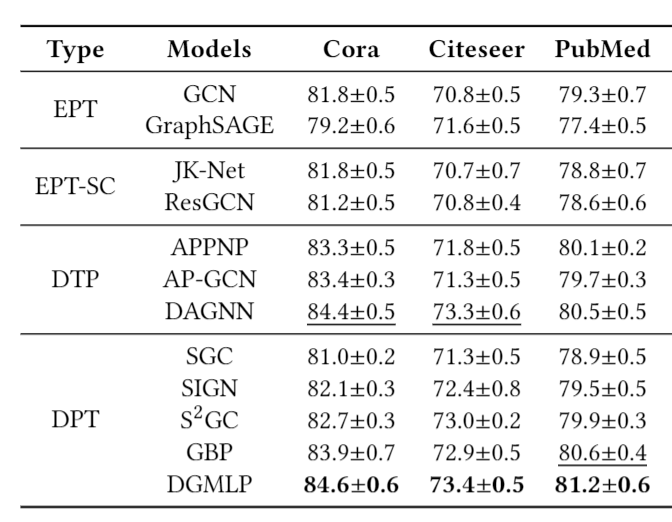Environments: Xeon Gold 5120 (CPU), 384GB(RAM), TITAN RTX (GPU), Ubuntu 16.04 (OS).
The PyTorch version we use is torch 1.7.1+cu110. Please refer to the official website -- https://pytorch.org/get-started/locally/ -- for the detailed installation instructions.
To install all the requirements:
pip install -r requirements.txt
We implement ResGCN, DenseGCN, MLP+Res, MLP+Dense, SGC, and 2 GCN variants on our own in ./src/models.py:
the code of ResGCN and DenseGCN is in ./src/gcn_sc.py;
the code of MLP+Res and MLP+Dense is in ./src/mlp_sc.py;
the code of SGC is in ./src/sgc.py;
the code of GCN with
the code for printing the gradient of the first layer of GCN is in ./src/print_gradient.py;
the code for the scalability experiment is provided in ./src/scalability/, please run gen_graph.py first to generate artificial graphs; then run appnp/gcn/dgmlp.py --n="graph_size", where "graph size" varies from 100,000 to 1,000,000 with the step of 100,000.
We also provide the official code of DAGNN, S$^2$GC, and Grand under ./src/.
To test the performance of DGMLP on the Cora, Citeseer, Pubmed dataset, please run this command:
bash ./src/run.sh
###Node Classification Results:
